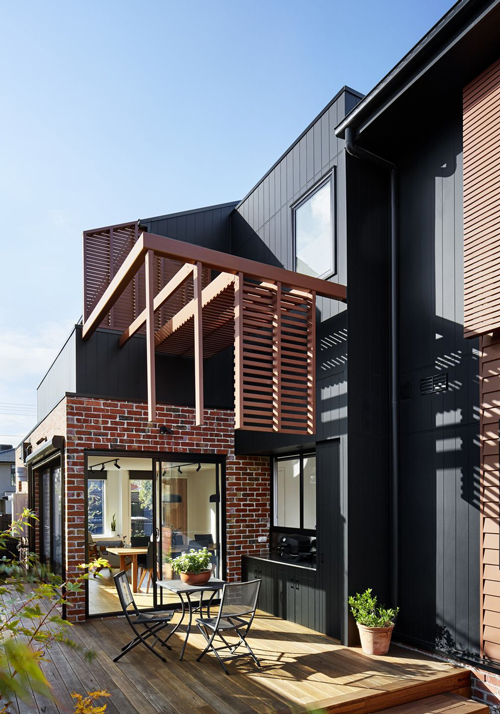
This new two-storey home has been designed for accessibility on the ground floor while making the most of a narrow lot.
Client
The client had lived in the area for 45 years. Her previous home was a five-bedroom two-storey house, which she was finding difficult to maintain. She wanted to stay in the area, but could not find a property that suited her needs. Therefore, she decided to have a three-bedroom townhouse built behind her existing property.
Solutions
The build location and design was tight as it was situated on a small block. The use of James Hardie Axon cladding allowed the installation of the sheets off the scaffolding erected instead of having a work station on the ground and trying to pass up each sheet individually. It only took 2 people to install whereas other systems such as foam and render require other trades and more materials. Being a sheet product installation, the timeline was also quick.
The council was not initially supportive of the development, so the architects had to make additional effort to articulate the building facade and volume. The design outcome and expression were to minimise any impact on the neighbours’ amenities, while still achieving the architectural vision.
As the site is small (approx. 11x19m), the brief was to make the whole ground floor accessible for the owner. For this reason, spatial efficiency was prioritised while still maximising the dwelling’s amenity.
Design

Formally, the pitched volume is subtracted by large openings, creating deep eaves and window sills. This aims to engage with the street and address the corner nature of the house. These openings blur the thresholds between indoor and outdoor to accommodate various spatial uses.
The effect of a silhouette has been achieved through the colour of burnt wood, effectively conveying the outline of the new volume. Material textures such as bricks, shiplapped timber, and vertical grooved linings were introduced to visually relate the new building to its surrounding context and to our own experience of Australian houses. Together they generate a sense of human scale.

The rich texture of recycled red bricks and natural finish vertical shiplapped timber cladding speaks to the adjacent building materials, while painted vertical Scyon Axon smooth cladding mitigates between the familiar brick pattern and shiplapped timber cladding.

Other finer elements of the building such as screens, cantilevered pergola and horizontal cladding were used to break up the silhouette massing in the outdoor living space. These elements were timber battens and Primeline Weatherboard, painted with a colour similar to brick in order to transition from bricks to ‘the silhouette’, encapsulating the outdoor room. The paint colour has a similar tone to red bricks, warm and familiar.

